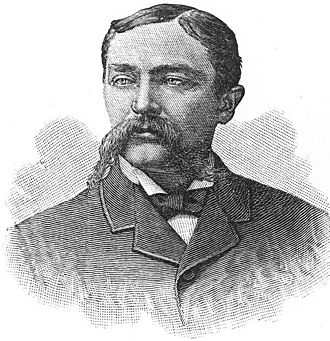William F. C. Nindemann facts for kids
Quick facts for kids
William F. C. Nindemann
|
|
|---|---|
 |
|
| Birth name | Wilhelm Friedrich Carl Nindemann |
| Born | 22 April 1850 Gingst, Pomerania, Prussia |
| Died | 6 May 1913 (aged 63) Hollis, New York, U.S. |
| Allegiance | |
| Branch | |
| Service years | 1867–1902 |
| Expeditions |
|
| Awards | Silver Jeannette Medal (1890) |
William Frederick Carl Nindemann (born April 22, 1850 – died May 6, 1913) was a brave explorer from Germany who became an American hero. He was famous for his amazing journeys to the Arctic, the icy lands around the North Pole. He even received a special award called the Congressional Silver Jeannette Medal for his courage and strength.
Contents
Who Was William Nindemann?
William Nindemann was born on April 22, 1850. His hometown was Gingst, a place on Rügen, which is Germany's largest island. He finished school in 1865. Two years later, in 1867, he moved to New York. There, he worked on a large boat called a yacht. He was a quartermaster, which means he helped steer the ship and manage its supplies.
Arctic Adventures: The Polaris Expedition
William Nindemann joined a big adventure called the Polaris expedition. This journey started from New London, Connecticut, on July 3, 1871. Their ship was the USS Polaris.
On October 15, 1872, the Polaris started to leak badly. The crew was told to take supplies off the ship and put them on the ice. But then, the ice broke! William Nindemann and eighteen other crew members were suddenly floating away on a piece of ice. They drifted south for 196 days, almost seven months, without seeing their ship again.
It was a very long and dangerous time. Luckily, on April 29, 1873, another ship called the USS Tigress rescued them. After returning to Washington, Nindemann bravely volunteered to go back out on the Tigress. He wanted to help search for the missing Polaris.
Arctic Adventures: The Jeannette Expedition
In 1879, William Nindemann joined another important journey. This was the Jeannette expedition, and its goal was to reach the North Pole. The ship for this trip was the USS Jeannette.
Sadly, the Jeannette got stuck in the ice and eventually sank. The crew had to leave the ship and try to walk to safety. They made it to the Lena Delta, a very cold area on the northern coast of Siberia.
On October 9, 1881, Captain George W. De Long sent Nindemann and another strong crew member, Louis P. Noros, to find help. The rest of the crew was starving. Nindemann and Noros walked south for many days. On October 21, they met a local person who led them to a village. From there, they sent a message to George W. Melville, the ship's chief engineer. Melville later joined them.
Melville, Nindemann, and another crew member named James H. Bartlett then searched the delta. They were looking for Captain De Long and the rest of his group. On March 15, 1882, they sadly found the bodies of De Long and his companions.
Later Years and Achievements
In 1890, William Nindemann received a very special award. It was the Congressional Gold Medal. This medal was given to him for his amazing bravery and strength during the Jeannette expedition.
He also served in the Spanish–American War. William Nindemann was also an inventor! In 1883, he patented a special tool for ships. It was a tong for the gaff of certain types of sailing vessels. In 1885, he wrote a small book about his adventures. It was called A German Sailor's Journey to the North Pole.
William Nindemann passed away on May 6, 1913, in Hollis, New York.

